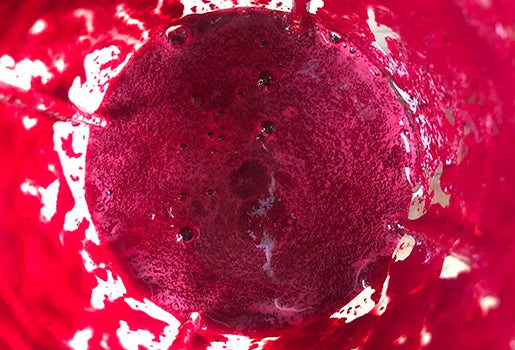Fruit of the Angels: New Ways to Enjoy Papaya!

Papaya, coined as the Fruit of the Angels, has amazing health benefits in addition to its much-loved taste. Did you know that papaya leaves, bark, roots, flowers, seeds, and peel can be used medicinally and nutritively? Since most of you don't have access to the entire papaya plant/ tree, I will stick with the fruit--flesh, peel, and seeds; not a bad start:).
The fleshy part of the papaya fruit is best known for its high content of vitamin A, C--there is 2-3 times more vitamin C in one med. size papaya than the recommended daily intake--and E. It is also known for its digestive properties.
The high amounts of these vitamins make this fruit exceptionally rich in antioxidants. As such, papaya helps prevent the oxygenation of cholesterol, which would otherwise oxidize and stick to blood vessel walls causing plaque build-up known to inhibit smooth blood circulation. As for the skin, the antioxidant rich fruit (and the fleshy part of the peel) is a wonderful application for sun kissed skin as it will help fight against free radical damage. So save those peels for your face and eat the fruit!
The Lesser Known Health Benefits of Papaya!
A lesser known health benefit is its high amount of folate. Folate is necessary for the conversion of a non-protein substance called homocysteine--I know, seems so foreign and irrelevant but trust me, it's a good piece of information to understand simply because as we get older many skin related problems correlate with poor blood flow and vulnerable blood vessels. When this substance is not converted into an amino-acid, it damages blood vessels by way of endothelial cell injury. In other words, damaging the thin layer of cells that line the interior surface of our blood vessels. Damage to these cells result in inflammation, poor fluid filtration, weak blood vessels, and slows healing after blood vessels have been punctuated from cuts or bruises.
Eating the orange flesh of this unctuous delicacy, however, is not all there is to papaya! Both papaya peel and seeds have a tremendous medicinal use, precisely because of its even higher content of the aforementioned vitamins and minerals such as magnesium, potassium, and copper. In addition, both peel and seeds have antibacterial and antimicrobial properties. The seeds are anti-inflammatory and are excellent for helping with digestion, easing stomach aches and purifying your liver. The peel of a young green fruit contains a milk called latex (also found in leaves), which contains more than 10 enzymes of which more than 5% is papain (papain helps remove dead skin cells and purify the skin), making an excellent treatment for skin blemishes. Latex is, therefore, used worldwide to soothe & strengthen skin, treat burns, and calm itches from insect bites. But note, latex can cause irritation to some so find out first how you react to it before applying the milk on your wound or blemishes.
3 New Ways to Enjoy Papaya:
1. As a Tea Concentrate for Kombucha
A tea concentrate can be prepared using the skin and seeds of a mature green papaya (an unripe papaya that is full size as opposed to an unripe young papaya). This combination amounts to the same nutritional value of the papaya leaves, which are extremely rich in the phytochemicals mentioned above--much more so than the flesh of the fruit.
1/2 lbs of peels and seeds
2 liters of water
Bring contents to boil. Lower and let simmer (without the lid) and let reduce by half. Strain liquid, then bottle. Refrigerate when bottles are room temperature. This will keep about 5 days. You can add this concentrate to the green tea when making kombucha or you can drink it as a tea with honey--perhaps add an equal amount of plain water if too strong.
2. As a Vinegar
There are at last two ways you can prepare papaya vinegar. One way is to simply chop your matter and fill a 2-quart jar 2/3rds up. Then top off with organic apple cider vinegar and let sit 3 weeks. This is the short cut method but it isn't quite as powerful as the long process below.
2 cups organic papaya flesh, peels and seeds
4 cups water
1 teaspoon organic white or brown sugar (optional for speeding up the fermentation process – will add extra flavor!)
Place your fruit scraps into a large (at least ½ gallon size), wide mouth mason jar. Add the water and optional white or brown sugar. Cover the container with a muslin cloth or a cheese cloth which you fold serval times to allow air to enter whilst preventing dust, or bugs from falling into your creation. Place in a dark place where it can sit undisturbed. After 6-8 weeks your vinegar will be ready. You will notice the formation of scum--a thick slimy pulp known as the "mother" or "scoby". This is the life of your vinegar! To learn more about it, and the process of making your own vinegar, click here. Bottle and label!
You can use this vinegar to:
- make salad dressings: this is a great way to enjoy the medicinal properties of papaya
- help treat acne or blemishes by making a dilution of 1:10 using filtered water: most diluted solution on your face after cleansing
- apply on small wounds, insect bites or candida to help disinfect by making a dilution of 1:10 using filtered water.
- gargle when infected by laryngitis or strep
3. As Pepper for daily consumption to purify your liver
Simply collect the seeds of a ripe fruit and wash off the membrane that coats the seed. Set out to dry. Then, put the seeds in a pepper mill. Use in lieu of pepper and enjoy it's bitter, spicy peppery taste. It is absorbed best when sprinkling over the flesh of papaya fruit, but you can also add it to salads or in a freshly squeezed juice.
Disclaimer: These suggested uses for papaya vinegar are based on my knowledge of the medicinal properties in papaya, understanding the amazing benefits of vinegar, and knowing about skin--it's a labor of love. But, I am not a doctor so I do not have authority to tell you how to treat ailments or maladies, so please use my tips at your own discretion and please consult a doctor for treatment. Thank you!
Leave a comment
Comments will be approved before showing up.



